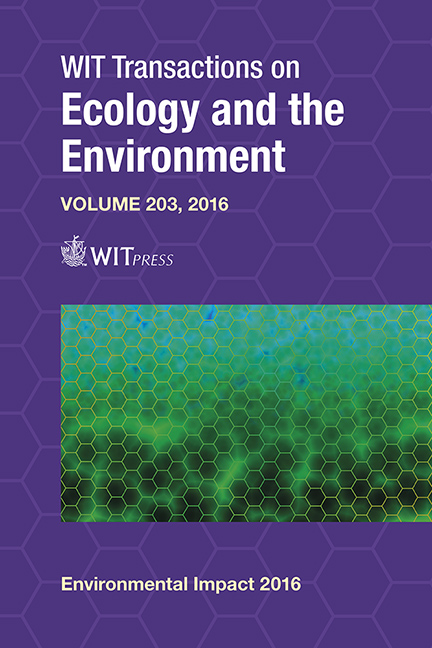Nitrate Leaching, Water-use Efficiency And Yield Of Corn With Different Irrigation And Nitrogen Management Systems In Coastal Plains, USA
Price
Free (open access)
Transaction
Volume
203
Pages
12
Page Range
159 - 170
Published
2016
Size
403 kb
Paper DOI
10.2495/EID160151
Copyright
WIT Press
Author(s)
G. C. Sigua, K. C. Stone, P. J. Bauer, A. S. Szogi
Abstract
Irrigation management for corn (Zea mays L.) production on the typical low water holding capacity soil of the southeastern USA needs to be improved to increase irrigation efficiency and reduce losses of nitrate from fields. A three-year (2012–2014) field study was conducted to compare the effects of three irrigation scheduling methods: Irrigator Pro (IPRO); normalized difference vegetative index (NDVI) and soil water potentials (SWP) and two levels of nitrogen (N) (157 and 224 kg N ha−1) on nitrate level, water-use, and yield of corn grown on four soil types in the Coastal Plains, USA. Yield of corn was not affected by irrigation methods or soil types. Both yield and water-use efficiency (WUE) of corn differed among years. Average yields and WUE were 15.6, 10.5 and 13.5 Mg ha−1 and 29.8, 16.8 and 23.8 kg grain ha−1 mm−1 in 2012, 2013 and 2014, respectively. Leached nitrate varied significantly with irrigation and N management systems, but not with soil types. The IPRO method had the lowest concentration of nitrate (11.1 mg L−1) followed by SWP (16.5 mg L−1) and NDVI (17.9 mg L−1). The low N application rate resulted in a lower nitrate concentration (13.4 mg L−1) than the high N rate (17.0 mg L−1). Our results suggest that each irrigation method was able to adequately manage irrigation to produce adequate corn yields for the region. Since the IPRO method resulted in a lower nitrate concentration in the lysimeters, the results indicate that a scheduling method may be a way to reduce fertilizer N losses to leaching on these soils.
Keywords
groundwater, nitrate, irrigation, nitrogen, coastal plain, water-use efficiency, NVDI, soil water potentials





